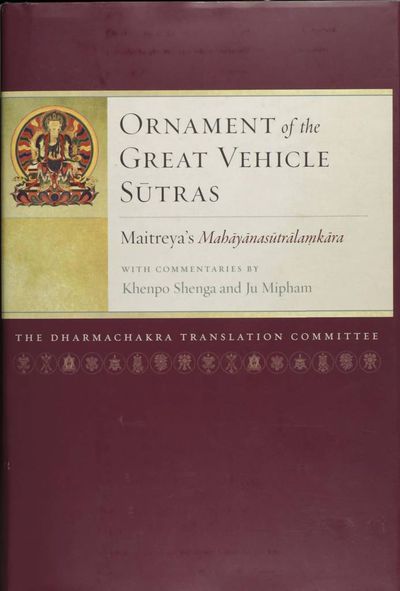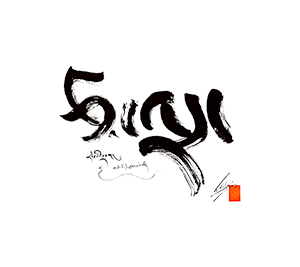- Translators’ Introduction vii
- Ornament of the Great Vehicle Sūtras 1
- Title and Translator’s Homage 4
- 1. How the Scripture Was Composed 5
- 2. Establishing the Teachings of the Great Vehicle 21
- 3. Going for Refuge 41
- 4. Potential 59
- 5. Developing the Enlightened Mind 77
- 6. Practice 109
- 7. Reality 125
- 8. Power 145
- 9. Full Maturation 157
- 10. Enlightenment 181
- Summary of Chapters 1 through 10 261
- 11. Inspiration 265
- 12. Investigation of the Dharma 285
- 13. Teaching 397
- 14. Practice 429
- 15. Practical Instructions and Advice 453
- Summary of Chapters 11 through 15 489
- 16. Skillful Means 491
- 17. Transcendences and Means of Attraction 497
- 18. Worship, Reliance, and the Immeasurables 571
- 19. The Factors That Accord with Enlightenment 639
- 20. The Qualities 777
- 21. Activity and Perfection 863
- Colophons 927
- Appendix: A Visual Representation of Mipham’s Topical Outline 931
- Notes 963
- English-Tibetan Glossary 969
- Tibetan-English-Sanskrit Glossary 977
- Bibliography 987
- Index 991
Ornament of the Great Vehicle Sūtras
The Buddhist masterpiece Ornament of the Great Vehicle Sūtras, often referred to by its Sanskrit title, Mahāyānasūtrālaṃkāra, is part of a collection known as the Five Maitreya Teachings, a set of philosophical works that have become classics of the Indian Buddhist tradition. Maitreya, the Buddha’s regent, is held to have entrusted these profound and vast instructions to the master Asaṅga in the heavenly realm of Tuṣita.
The Ornament provides a comprehensive description of the bodhisattva’s view, meditation, and enlightened activities. Bodhisattvas are beings who, out of vast love for all sentient beings, have dedicated themselves to the task of becoming fully awakened buddhas, capable of helping all beings in innumerable and vast ways to become enlightened themselves. To fully awaken requires practicing great generosity, patience, energy, discipline, concentration, and wisdom, and Maitreya’s text explains what these enlightened qualities are and how to develop them.
This volume includes commentaries by Khenpo Shenga and Ju Mipham, whose discussions illuminate the subtleties of the root text and provide valuable insight into how to practice the way of the bodhisattva. Drawing on the Indian masters Vasubandhu and, in particular, Sthiramati, Mipham explains the Ornament with eloquence and brilliant clarity. This commentary is among his most treasured works. (Source: Shambhala Publications)
| Citation | Dharmachakra Translation Committee, trans. Ornament of the Great Vehicle Sūtras: Maitreya’s Mahāyānasūtrālaṃkāra with Commentaries by Khenpo Shenga (mkhan po gzhan dga') and Ju Mipham ('ju mi pham). Boston: Snow Lion Publications, 2014. |
|---|---|
- Maitreya, Asaṅga. Mahāyānasūtrālaṃkārakārikā (theg pa chen po mdo sde'i rgyan zhes bya ba'i tshig le'ur byas pa). D 4020, sems tsam, phi 1b1-39a4. In bstan 'gyur (sde dge), Vol. 123: 1-79. Delhi: delhi karmapae choedhey, gyalwae sungrab partun khang, 1982-1985.

- Mi pham rgya mtsho. Theg pa chen po mdo sde'i rgyan gyi dgongs don rnam par bshad pa theg mchog bdud rtsi'i dga' ston. In Sde-dge dgon-chen Prints of the Writings of ’Jam-mgon ’Ju Mi-pham-rgyam tsho. Edited by Dilgo Khyentse. Vol. 2. Kathmandu: Shechen Monastery, n.d.?
- Gzhan phan chos kyi snang ba. Theg pa chen po mdo sde'i rgyan ces bya ba'i mchan 'grel. In Gzhung chen bcu gsum, Vol. 3: 395-646. Delhi: Konchhog Lhadrepa, 1983, 1993.



